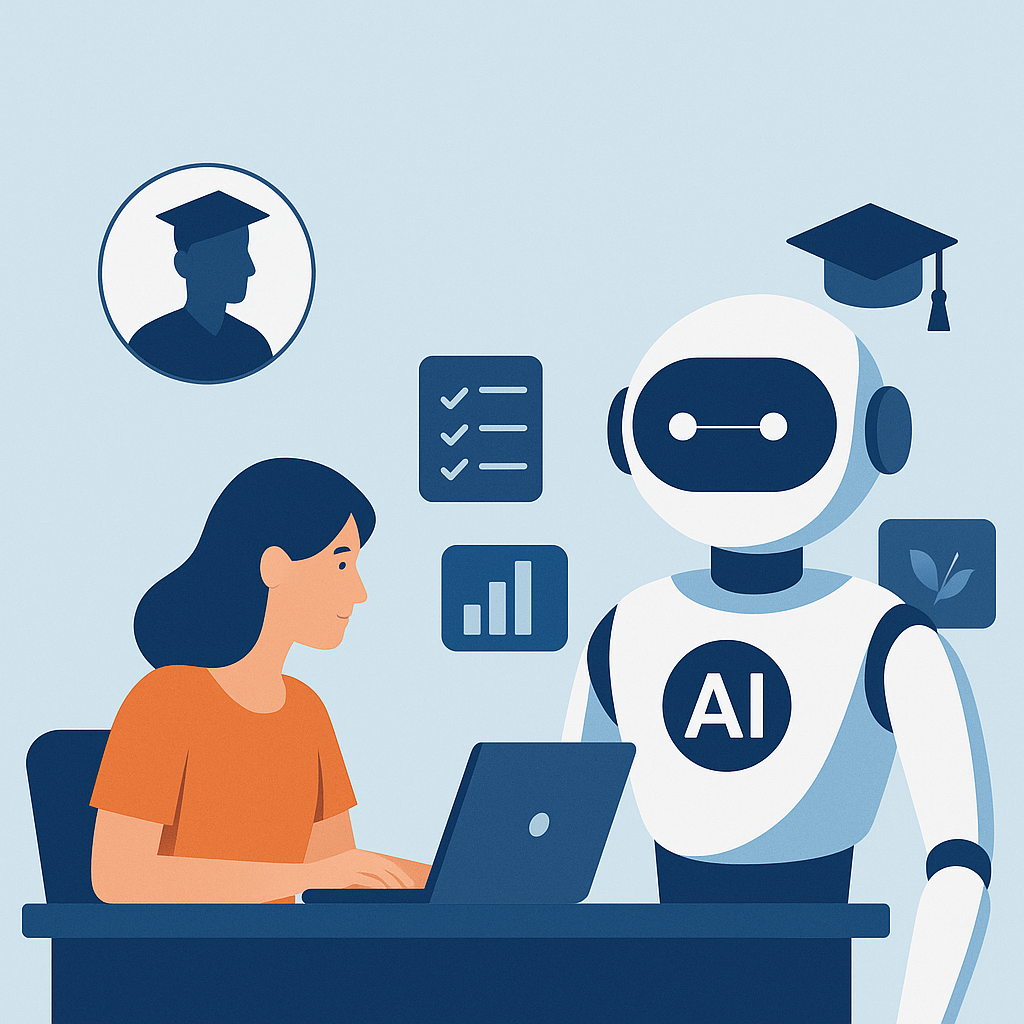Introduction
As distance learning cements its place in higher education, Artificial Intelligence (AI) is emerging as a game-changer. From adaptive learning paths to real-time feedback and intelligent tutoring systems, AI technologies promise to transform how we teach and learn remotely. But are higher education institutions—and their students—ready to harness this potential responsibly?
This article explores the expanding role of AI in distance higher education, its benefits and risks, and how current student practices reflect a broader need for institutional support, as evidenced by recent research conducted at the Hellenic Open University.
The Promise of AI in Distance Learning
AI offers a powerful toolkit for distance education, especially in areas where traditional teaching methods struggle to meet the needs of remote learners. Some of the most promising applications include:
- Personalized learning environments that adapt to individual pace and learning styles;
- Automated feedback systems that provide immediate responses to assignments or quizzes;
- Chatbots and virtual assistants that offer 24/7 academic support;
- Predictive analytics that identify students at risk of disengagement or dropout.
These tools help bridge the gap created by physical distance, offering a more flexible and responsive learning experience. In asynchronous or self-paced programs—common in distance higher education—AI can act as a digital learning companion when human interaction is limited.
A Reality Check: What Students Are Really Doing
Despite the growing availability of AI tools, many students still struggle to integrate them meaningfully into their studies. A recent study by Kostas and Manousou (2025) at the Hellenic Open University surveyed 373 postgraduate distance learners across two academic years. The findings revealed that:
- Most students were aware of AI tools but lacked the confidence or knowledge to use them effectively;
- AI usage was sporadic and superficial, often limited to general writing or grammar tools;
- Students expressed concerns about reliability, academic integrity, and ethical ambiguity in AI-generated content;
- A significant number pointed to a lack of institutional training or guidance as a barrier to responsible use.
This highlights a key challenge: technological availability does not equal readiness. For AI to truly enhance distance learning, students need structured support, not just access to tools.
Barriers to Adoption: Not Just Technical
Why aren’t more students fully embracing AI in distance learning?
- Digital literacy gaps: Knowing how to use AI critically is different from knowing it exists.
- Ethical concerns: Issues like plagiarism, transparency, and data privacy cause hesitation.
- Limited institutional frameworks: Many universities have yet to provide clear guidelines or training on appropriate AI use.
- Risk of overreliance: Students worry about losing their critical thinking and autonomy when AI becomes a shortcut.
These concerns underline the need for holistic AI integration—one that goes beyond tools and focuses on skills, values, and policies.
What Institutions Can Do: A Call for Action
For distance education to benefit fully from AI, higher education institutions must step up by:
- Providing AI literacy training for both students and faculty;
- Developing ethical frameworks and usage policies that are transparent and inclusive;
- Integrating AI into course design in pedagogically sound and human-centered ways;
- Encouraging reflective use of AI—not just functional, but critical engagement.
Projects like INFINITE are already leading the way by offering open educational resources, practical guides, and institutional tools that promote ethical, informed, and inclusive use of AI in higher education.
Conclusion
AI has the potential to make distance higher education more engaging, accessible, and effective—but only if implemented thoughtfully and ethically. The student perspective from the HOU study is clear: curiosity is high, but support is lacking. To close this gap, institutions must move beyond just offering AI tools—they must foster the skills and culture needed to use them responsibly.
Further Reading
Kostas, A., & Manousou, E. (2025). Benefits and challenges of AI in higher distance education: Students’ perceptions and practices in Hellenic Open University (HOU). Advances in Mobile Learning Educational Research, 5(2). https://doi.org/10.25082/AMLER.2025.02.011

